Cozy Old Fashioned Beef Stew Recipe: Homemade Comfort Magic
Crafting a hearty beef stew with old fashioned techniques brings warmth to chilly evenings.
Slow-cooked meat melts into rich, velvety gravy that hugs each vegetable perfectly.
Generations of home cooks have perfected this comforting classic through patient simmering and deep flavor layering.
Tender chunks of beef absorb aromatic herbs and robust seasonings during a long, gentle cooking process.
Rustic ingredients combine to create a dish that speaks directly to your soul’s hunger.
Memories of grandmother’s kitchen emerge with every spoonful of this timeless meal.
You’ll savor every bite of this deeply satisfying culinary tradition that connects us to simpler cooking methods.
Old Fashioned Beef Stew Overview
Ingredients for Old Fashioned Beef Stew
Main Protein:Aromatics and Flavor Enhancers:Liquid and Seasoning Components:Vegetables:How to Make Old Fashioned Beef Stew
Step 1: Sear the Beef
Heat olive oil in a large pot over medium-high heat.
Brown beef chunks in batches, creating a rich golden crust.
Transfer seared beef to a separate plate.
Step 2: Build Flavor Base
In the same pot, sauté:Cook until onions become translucent and fragrant.
Step 3: Enhance Aromatics
Stir in:Pour red wine and let it simmer for 2 minutes, releasing deep flavors.
Step 4: Create Liquid Foundation
Add beef broth and return beef to the pot.
Bring mixture to a gentle simmer.
Step 5: Slow Cook Beef
Cover pot and reduce heat.
Simmer for 1.5-2 hours until beef becomes meltingly tender.
Step 6: Add Vegetable Medley
Introduce:Simmer for 30-40 minutes until vegetables are perfectly soft.
Step 7: Thicken Stew
Whisk flour with water to create a smooth slurry.
Stir into stew during final 10 minutes of cooking.
Step 8: Final Seasoning
Sprinkle salt and black pepper.
Taste and adjust seasoning.
Serve piping hot with crusty sourdough bread.
Helpful Tips for Beef Stew Success
Flavor Variations for Old Fashioned Beef Stew
Serving Suggestions for Old Fashioned Beef Stew
Storage Tips for Beef Stew Leftovers
FAQs
Browning creates a delicious caramelized exterior that adds deep, rich flavor to the meat through a process called Maillard reaction, which develops complex taste profiles.
While beef chuck is traditional, you can substitute with similar tough cuts like beef round or beef brisket that become tender with slow cooking.
Low and slow cooking is key. Simmering the beef at a gentle temperature for 1.5-2 hours breaks down tough muscle fibers, resulting in melt-in-your-mouth meat.
Use flour or cornstarch as a thickener in the last 10 minutes of cooking, and avoid adding too much liquid initially. This helps create a rich, thick consistency.
Print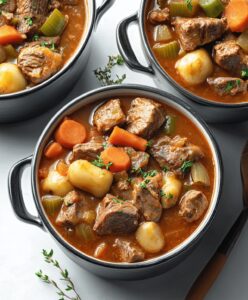
Old Fashioned Beef Stew Recipe
- Total Time: 2 hours 30 minutes
- Yield: 6 1x
Description
Hearty old fashioned beef stew showcases tender meat simmered with root vegetables in a rich, savory broth. Rustic comfort emerges from slow-cooked ingredients that nourish and warm you deeply.
Ingredients
Meat:
- 2 pounds (907 grams) beef chuck, cut into 1-inch cubes
Vegetables:
- 1 large onion, diced
- 3 large carrots, sliced
- 4 medium potatoes, peeled and cubed
- 2 celery stalks, chopped
- 3 cloves garlic, minced
Liquids and Seasonings:
- 4 cups (946 milliliters) beef broth
- 1 cup (237 milliliters) red wine
- 3 tablespoons (45 milliliters) olive oil
- 2 tablespoons (30 grams) tomato paste
- 2 tablespoons (16 grams) all-purpose flour
- 1 teaspoon dried thyme
- 1 teaspoon dried rosemary
- Salt and pepper to taste
Instructions
- Warm olive oil in a heavy-bottomed pot over medium heat (around 350°F) and methodically brown meat segments, creating rich caramelized edges.
- Using the same pot, gently sauté onions and garlic until aromatic and translucent, releasing their deep flavors.
- Introduce tomato paste and herbaceous thyme and rosemary, creating a robust flavor foundation. Deglaze with red wine, allowing alcohol to evaporate for approximately 2 minutes.
- Pour beef broth into the pot and reintroduce previously browned meat, elevating liquid to a gentle simmer.
- Reduce heat to low, cover pot, and allow stew to slowly tenderize for 1.5-2 hours, developing complex flavors and ensuring meat becomes meltingly soft.
- Incorporate hearty root vegetables – carrots, potatoes, and celery – continuing to simmer for an additional 30-40 minutes until vegetables reach perfect tenderness.
- To enhance stew’s consistency, create a quick slurry by whisking flour with water, then gently stirring into bubbling liquid during final cooking moments.
- Calibrate seasoning with salt and freshly cracked pepper, ensuring balanced flavor profile. Serve piping hot alongside rustic crusty bread for optimal enjoyment.
Notes
- Ensure beef is cut into uniform 1-inch cubes for even cooking and tender texture.
- Pat meat dry before browning to create a beautiful golden-brown crust that locks in rich flavors.
- Use chuck roast or beef stew meat for maximum tenderness and rich marbling.
- For gluten-free version, replace wheat flour with cornstarch or arrowroot powder to thicken stew.
- Prep Time: 30 minutes
- Cook Time: 2 hours
- Category: Lunch, Dinner
- Method: Simmering
- Cuisine: American
Nutrition
- Serving Size: 6
- Calories: 390 kcal
- Sugar: 4 g
- Sodium: 400 mg
- Fat: 22 g
- Saturated Fat: 7 g
- Unsaturated Fat: 13 g
- Trans Fat: 0.5 g
- Carbohydrates: 18 g
- Fiber: 3 g
- Protein: 30 g
- Cholesterol: 85 mg

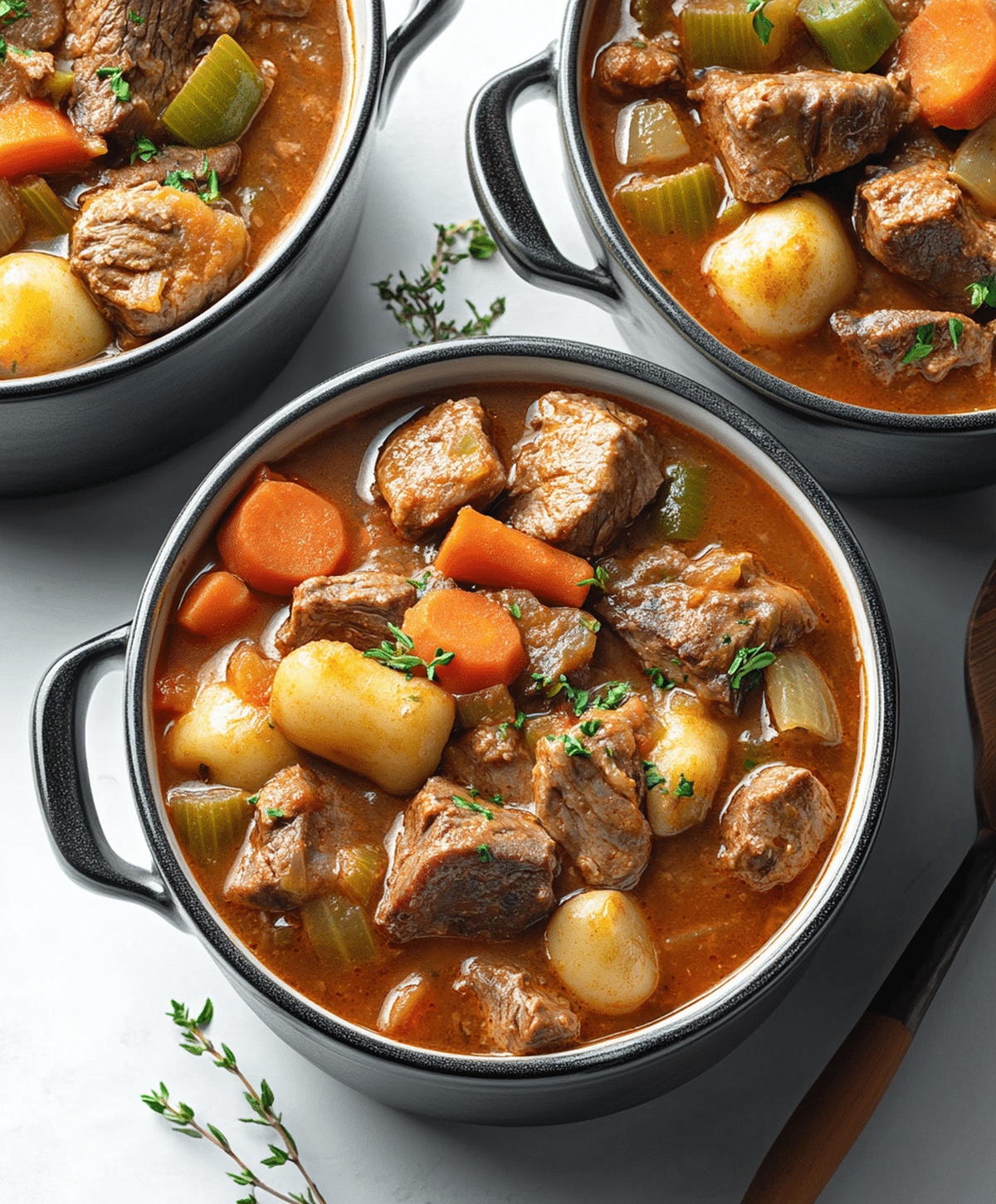
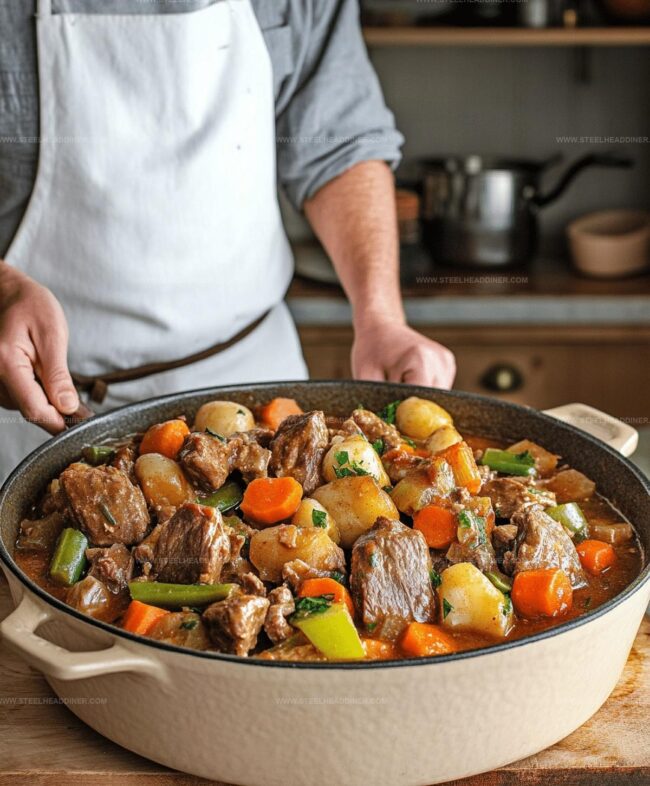
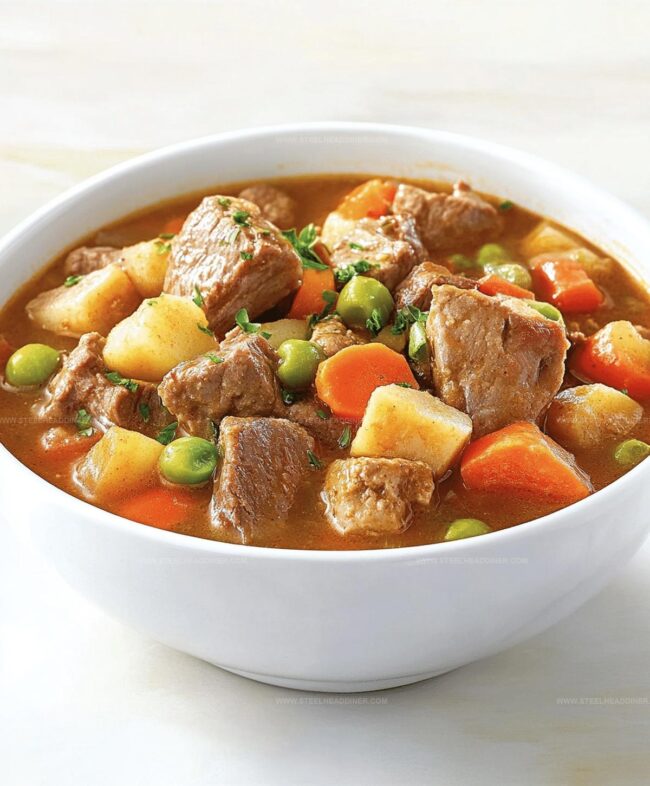
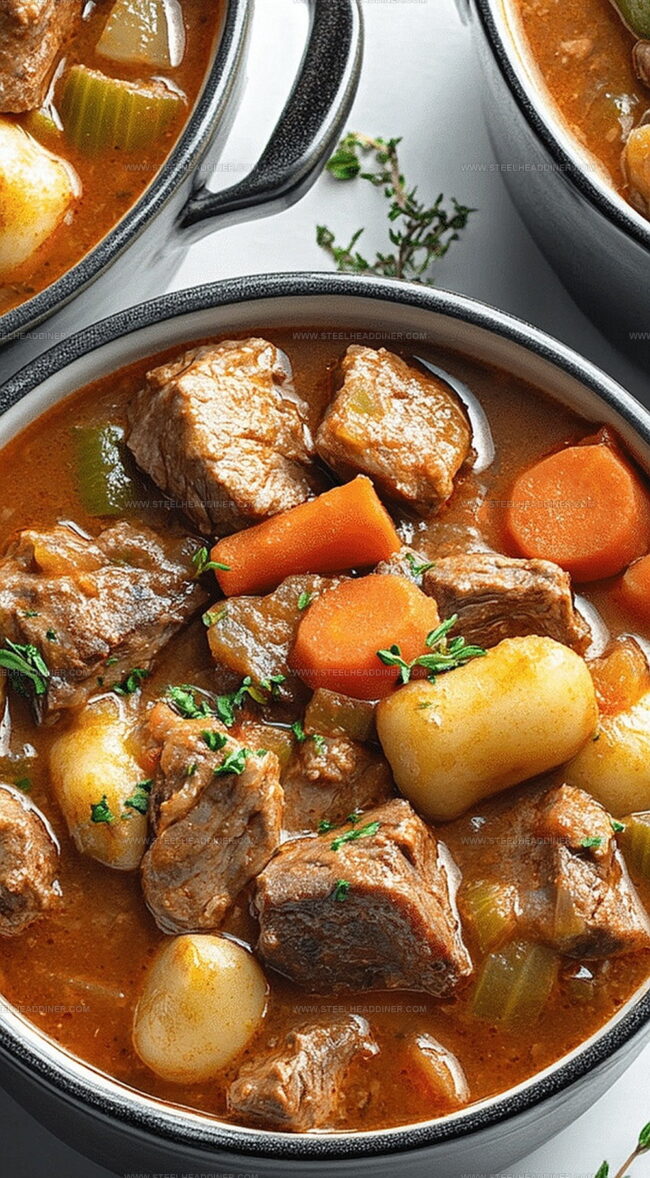
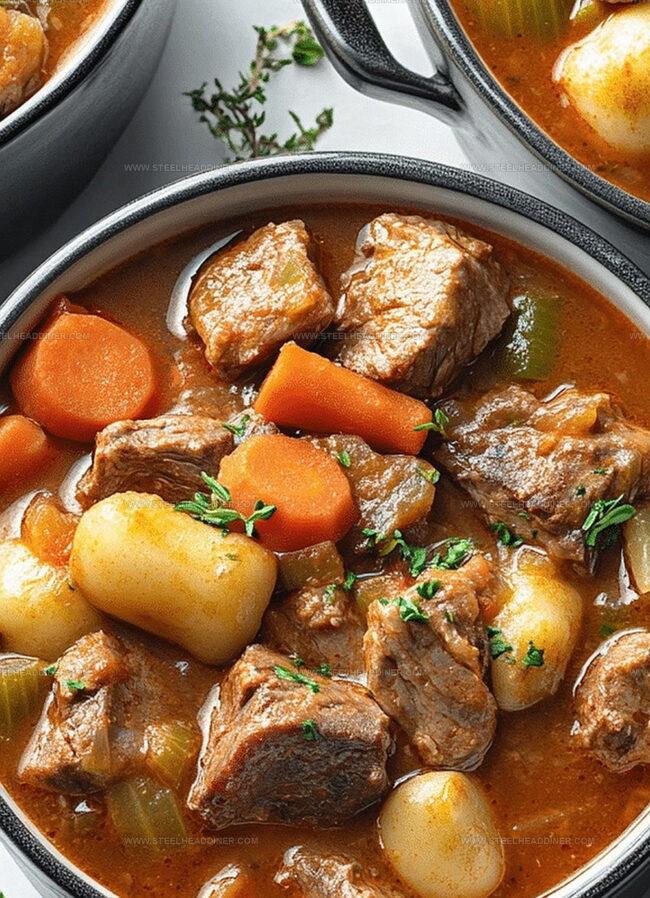
Jack Monroe
Founder & Recipe Innovator
Expertise
Pacific Northwest cuisine, Single-serving recipe development, Sustainable sourcing and cooking, Modern comfort food
Education
Brightwater
Associate of Applied Science in Culinary Arts
Focus: Sustainable cooking, seasonal ingredients, and food systems education
Jack grew up with a fishing rod in one hand and a cast-iron skillet in the other. After graduating from Brightwater: A Center for the Study of Food, he set out to prove that cooking for one could still taste like a feast.
Jack believes that food should feel real: fresh, fearless, and a little wild, just like the rivers he grew up around. For Jack, every single dish is a small adventure, and the best ones are the ones you can cook with heart, not hassle.